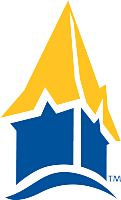Dollar Sign Math for Geometry¶
Mathematicians have been using LaTeX for decades. Now that the wider tech and scientific communities are working more often in markdown languages and creating their own equations, they use LaTeX and often call it Dollar Sign Math. Fortunately for math geeks, the wider adoption from the scientifi community has led to software like GeoGebra and D2L including a DSM equation editor as an option.
DSM Code for Common Geometry Objects¶
Segment
\(\overline{AB}\)
\overline{AB}
Angle
\(\angle ABC\)
\angle ABC
Measured Angle
\(\measuredangle ABC\)
\measuredangle ABC
Ray
\(\overrightarrow{AB}\)
\overrightarrow{AB}
Line
\(\overleftrightarrow{AB}\)
\overleftrightarrow{AB}
Triangle
\(\triangle ABC\)
\triangle ABC
Circle
\(\circ PR\)
\circ PR
Square (QED)
\(\square\)
\square
Perpendicular
\(\perp\)
\perp
Parallel
\(\parallel\)
\parallel
Degree Measure
\(90^\circ\)
\90^\circ
Congruent
\(\cong\)
\cong
Similar
\(\sim\)
\sim
Fraction
\(\frac{1}{2}\)
\frac{1}{2}
DSM Code for Common Relations¶
The relations on the keyboard work fine: equality and strict inequalities. For example, given real numbers \(x,y\), then either \(x < y\), \(x > y\) or \(x = y\). Here are three common relations we often use.
Greater than or equal to
\(\geq\)
\geq
Less than or equal to
\(\leq\)
\leq
Not equal to
\(\neq\)
\neq
DSM Code for Sets¶
Modern geometry uses set theory as part of the fundamental logic of the system. Lines are sets of points, etc.
Element of
\(A \in \overline{AB}\)
A \in \overline{AB}
Subset
\(\subset\)
\subset
Superset
\(\supset\)
\supset
Union
\(\cup\)
\cup
Intersection
\(\cap\)
\cap
Proper Subset
\(\subseteq\)
\subseteq
Proper Superset
\(\supseteq\)
\supseteq
DSM Code for Quantifiers and Implications¶
There exists
\(\exists\)
\exists
For every
\(\forall\)
\forall
Implies
\(\implies\)
\implies
Therefore
\(\therefore\)
\therefore
